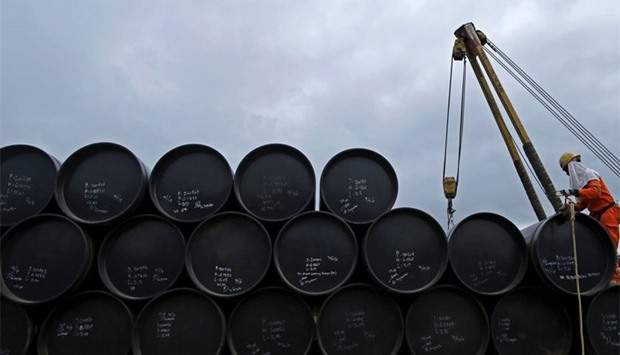Oil traded slightly lower yesterday, but was still on track for its biggest annual gain since 2009, after Opec and other major producers agreed to cut output to reduce a global supply overhang that has depressed prices for two years.
A two-rig rise in the oil rig count in the United States, the ninth weekly increase in a row, as reported by oilfield services provider Baker Hughes Inc, added to bearish sentiments.
But the total count of 525 for the week, the last for the year, was still below last year’s level by 11 rigs.
US benchmark West Texas Intermediate (WTI) crude futures were down 5 cents, or 0.1%, at $53.72 a barrel, while Brent fell 3 cents, or 0.1% , to $56.82.
“Some profit-taking very light trading - a lot of people have already done what they needed to do for the year.” said Elaine Levin, president of Powerhouse, an energy-specialised commodities broker in Washington.
Brent rose 52% this year and WTI climbed around 45%, the largest annual gains since 2009, when the benchmarks rose 78% and 71% respectively.
Oil prices have slumped since the summer of 2014 from above $100 a barrel.
The price rout, due to oversupply thanks in part thanks to the US shale oil revolution, was accentuated later that year when Saudi Arabia rejected any deal by the Organisation of the Petroleum Exporting Countries (Opec), to cut output and instead fought for market share.
But a historic Opec agreement struck over three months from September that will reduce production from January 1, marked a return to the 13-country group’s old objective of defending prices.
Oman told some customers it will reduce term allocations by 5% in March, but did not say whether the supply reduction would continue after that.
Although doubts remain as to the production cuts’ effectiveness in implementation, the rise in prices can be seen as “proof of international credibility,” for Opec and partners, said Igor Yusufov, founder of the Fund Energy investment firm and a former Russian energy minister.
Equally as important to oil prices next year will be the development of demand globally, and major forecasters diverge in their predictions.
“We see a big variation in demand growth assessments for 2017, ranging from +1.22mn bpd (barrels per day) to +1.57mn bpd,” analysts at JBC said in a note to clients.
Oil will gradually rise towards $60 per barrel by the end of 2017, a Reuters poll showed on Thursday, with further upside capped by a strong dollar, a likely recovery in US oil output, and possible non-compliance with agreed cuts.

Oil price


